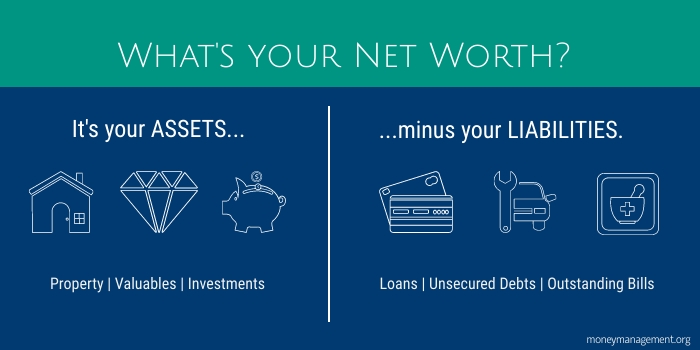Your total assets or net worth, essentially, is the dollar measure of your resources or assets minus your liabilities. You can work out your total assets by taking away your liabilities (debts) from your resources. On the off chance that your resources/assets surpass your liabilities, you will have a positive total asset. On the other hand, if your liabilities are more prominent than your resources, you will have a negative net worth.
For specific applications, be that as it may, this fundamental total assets computation may not be sufficient. In the event that you hold copyrights, licenses or other intellectual property (IP), you might have to work out your “tangible” total assets (net worth), which is the amount of all your tangible resources minus the aggregate sum of your liabilities.
What is Tangible Net Worth
In the sense that it totals your assets and liabilities, your physical or tangible net worth is similar to your financial net worth, but it goes a step further. Any intangible assets, such as copyrights, goodwill, patents, and other intellectual property, are subtracted.
For example, businesses compute tangible net worth to evaluate the company’s liquidation value if it were to discontinue operations or be sold. Individuals who are looking for personal or small business loans and the lender requires a “genuine” net worth figure may find this figure useful. Your lender might be interested in your monetary assets – and how much the lender could reclaim if you failed on your debt and had to liquidate your possessions.
Tangible Versus Intangible Assets
The difference between net worth and tangible net worth assessments is that the former includes all assets, while the latter excludes non-tangible assets. All you have that can be converted into cash is referred to as an asset. Assets, according to this definition, include cash, investments, and real estate. (land and permanent structures linked to the property, such as houses), and personal goods (everything else that you own such as cars, jewellery, boats and furniture).
Intangible assets, on the other hand, are assets that cannot be held in your hands. Intangible assets include trademarks, goodwill, copyrights, patents, trademarks, and intellectual property, which cannot be seen or touched but are nonetheless valuable.
Calculating Your Tangible Net Worth
The following is a simple formula for measuring your tangible net worth:
Tangible Assets (Net Worth) = Total Assets – Intangible Assets – Liabilities
Calculating your net worth for the first time will most likely take the longest. The approach will likely take less time if you figure out the methodology and how to appraise your assets. Here’s how to do it step by step.
You can also keep track of your net worth using tools like Google or Excel Spreadsheets, and other online personal finance apps available below:
-
Personal Capital
Best free automated net worth tracking app. Personal Capital has a high level of automation. You can see your net worth in near real-time by syncing your asset and liability accounts (bank accounts, brokerage accounts, mortgages, and so on). Personal Capital is the simplest solution on the list because it requires no effort from you once your bank accounts are linked.
-
Ynab
Best budget integration. My favourite budgeting app is YNAB (and the one I use). Its zero-based budgeting concepts make it simple to manage and remain on track with your spending. An integrated net worth tracking solution is available within YNAB. This is how it goes.
All of your accounts, assets, and liabilities should be linked. YNAB then generates reports that reflect your net worth. The most significant disadvantage of YNAB’s net worth tracking is that you must manually change the balances of your investment accounts.
-
Tiller Money
Best spreadsheet net worth tracking. Tiller Money is the way to go if you want to track your net worth using Google Sheets or Excel rather than an app. Tiller is a program that automates the download of financial data into your preferred spreadsheet application.
It simplifies the most inconvenient aspect of using spreadsheets for personal finances: manually adding transactions. You’ll get a template spreadsheet with net worth tracking when you sign up with Tiller.
Final Thoughts
Even if you intend to calculate your net worth using one of the many online tools or applications, it’s a good idea to do it manually at least once—you’ll get the most out of the statistics that way. While you can do the work using a pencil and paper and a calculator, a spreadsheet tool like Microsoft Excel or Google Sheets can handle the calculation for you and lessen the chances of making a mistake.
RECOMMENDED

